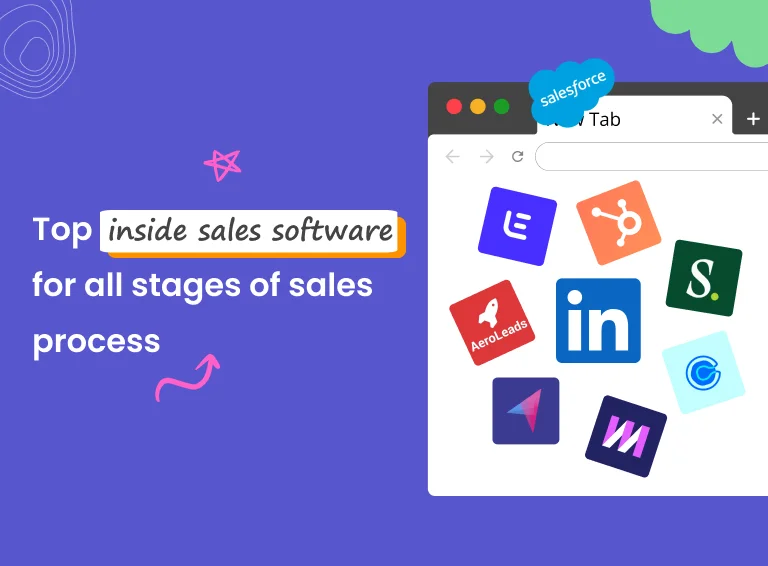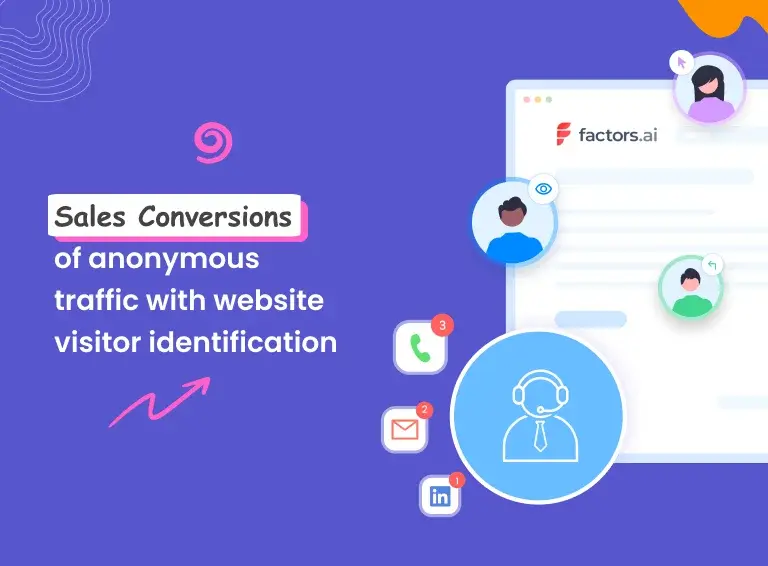Every sales team is responsible for closing deals and generating revenue.
However, salespeople often find themselves performing tasks such as taking care of prospecting, lead qualification and other tasks which prevent them from focusing on selling.
The result?
A vicious cycle, where salespeople attempting to juggle prospecting and closing, are forever chasing 2 rabbits at once.
This leads to
- Lesser number of high quality leads in the pipeline
- Lower close rate
- Your salespeople being overwhelmed and confused as to which objective to pursue
- Focus placed on low quality leads while the high quality ones fail to be contacted
These events inevitably point to confusion, reduced sales productivity and revenue generated.
But it doesn't have to be that way.
That's where building a Sales Development Representative (SDR) unit becomes invaluable- as it allows one segment of your team to entirely focus on prospecting and lead qualification while the other devotes themselves to closing.
Adding an SDR unit to your sales team has a direct correlation with higher quality of leads and a healthier pipeline.
The cherry on top of this conversion cake?
With the junk leads cleared by the sales development representative, adequate time can be spent on only the red-hot leads, preventing them from slipping between your fingers into a rival’s waiting funnel!
Sound like a savoury sales recipe for a revenue ramp-up?
Read on to find out everything you need to know about how to set up an effective Sales Development Representative team.
1. What Is A Sales Development Representative?
A Sales Development Representative is the front end of your Sales Team.
SDRs take up the role of reaching out to your prospects, cold calling and mailing them, understanding their pain points, establishing a healthy relationship with them, ferrying them down the sales funnel and qualifying them as a sales opportunity before handing them off to the Sales Account Executives who focus solely on closing the deal.
The role of an SDR varies a lot depending on whether they are a part of Inbound or Outbound environments.
2. When Should You Hire A Sales Development Representative?
Here are the main points that you should focus before hiring an SDR -
- When your sales executives have their hands full trying to juggle prospecting with actual selling
- When your sales team cannot meet its quota due to inadequate pipeline volume
- When your team is spending too much time closing, and therefore is playing catch-up to prospecting, until the reverse happens
- If your CRM shows too many poor quality leads
- If you see that your prospects are not being devoted adequate time by your Sales team
3. What Does a Sales Development Representative Do?
The duties of an SDR vary depending on whether they are part of Inbound or Outbound Sales teams.
In an Inbound role, the SDR qualifies the leads coming in to the pipeline, ensures that they are a good fit and passes them on to the Account Executive (AE).
The most important function that an Inbound SDR performs is Quality Control for their sales team.
In an outbound environment, the SDR (sometimes termed as BDR) has to prospect, initiate conversation, and qualify the lead before passing the lead onto the AE and hence plays a more pivotal role.
An Outbound SDR is evaluated based on the number of Sales Qualified Leads that he/ she generates.
It is the SDR’s role to ensure that every single lead that he hands off to the Account Executive is a viable sales opportunity with high probability of conversion.
But what do they do to achieve this?
a) Research And Building The ICP
An SDR first needs to understand who their target audience is, and what potential issues they face.
In order to aggressively approach prospects from multiple angles, the SDR must first know-
- Who his prospects are?
- What they do?
- How they operate?
- What their problems are?
- Who are the competitors who can take these prospects away?
This data will help him build his Ideal Customer Profile (ICP) which can then guide his lead prospecting.
Here's a complete framework on building an ICP and lead generation process.
b) Reaching Out To Prospects - Inbound And Outbound
Once the ICP has been created, it is the duty of the SDR to initiate communication to prospects, and this task differs slightly between inbound SDRs and outbound SDRs.
In Inbound Sales, an SDR has to initiate conversations with leads who have shown intent.
Executing timely communication through the initial call followed by various followup touches, and finally qualifying them are critical roles played by the SDR.
In Outbound Sales, an SDR is tasked with initiating conversations through cold calling and cold mailing, to people who may never have heard of your product before.
Repetition of targeted, appropriate messaging across multiple channels such as Email, phone, Linkedin, social media, etc holds the key in Outbound Sales Development.
A Sales Engagement Platform like Klenty will help your sales automate your outbound sales process by sending personalized emails, automated follow-ups including calls and tasks, and track all the engagement metrics.
c) Engaging Prospects And Relationship-Building
Once initial communication has been established, and two way dialogue ensues, the roles of an Inbound and Outbound SDR begin to converge.
An SDR needs to be attentive and empathetic in listening to the prospect, creating rapport through engaging them across multiple touch points to know their pain points, and the kind of solution they seek.
Once prospects have been engaged, the next few activities of the SDR can happen organically and simultaneously or through sequential follow-up conversations.
d) Educating Leads
The SDR’s next critical job is to educate the lead about the product they offer, its features, benefits, and how it can relieve the lead’s pains.
e) Lead Qualification
After one or more follow-up meetings, the SDR will be in a position to qualify the lead as a mutual fit using frameworks such as
- BANT (Budget, Authority, Need, Timeline)
- ANUM (Authority, Need, Urgency, Money)
- GPCT (Goals, Plans, Challenges, Timelines).
Check out the complete guide to finding your best sales leads.
f) Hand Off To The Account Executive
Having ascertained the lead’s status as an Sales Qualified Lead (SQL), SDR then passes the warm lead to the Account Executive at the right time based on pre-established criteria. These criteria can be the involvement of a decision-maker, a mutual fit between product and need or more process-driven through the above-mentioned frameworks.
4. What Skills Must A Sales Development Representative Possess?
An SDR’s main challenge is that no one actually wants to be approached and sold to by a salesperson.
In order to overcome this, an SDR must be skilled in -
a) Empathy
Empathy for the lead is necessary to turn conversations into connections.
Stepping into the lead’s shoes is an oft-used cliche but a highly essential skills for an SDR to build a lasting relationship between the business and the lead.
b) Perseverance
SDR’s are the vanguard of the Sales team, and need to heavily engage with prospects who are not aware of your product.
Naturally, SDR’s will be faced with several instances where their proposition and even communication is rejected.
And that’s where an SDR’s inner mettle truly comes to the fore- they can’t afford to throw in the towel, and need to employ a variety of communication strategies to get the prospect to engage.
However, sometimes, a prospect just may not be interested in your product, or capable, of being a mutual fit.
Resilience is therefore a key character in the world of Sales development where rejection is common, and over time, it can be honed as a skill.
c) Listening
SDRs must be expert listeners, devoting huge portions of their time to active listening, and acquainting themselves with the lead’s situation through insightful questions.
d) Communication
SDRs need to possess strong communication skills, which will allow them to initiate dialogue through sending persuasive outreach mails, phone calls, videos and webinars and thereby build a strong relationship with leads.
e) Product Understanding
An SDR must develop the knowledge of an SME in the product in order to educate leads with authority and conviction, and deliver with clarity how the product can be the dream solution for the client’s problems.
f) Research
SDRs need to have immense research skills in order to understand account characteristics such as field, location, use case of your product, and relevant insights to deliver effective messaging and talking points.
g) Organization And Multi-Tasking
SDRs have a very high volume of work since they need to contact prospects, follow-up leads, qualify them and hand them over to Account Executives (AEs).
Therefore, they need to be highly organized in going about their process and must be capable of multi-tasking..
In order to help the Sales Rep manage his repetitive functions such as email outreach, Sales Engagement Platforms such as Klenty can be used to ensure that SDRs focus on high-value tasks through automating email outreach campaigns.
5. Where Does A Sales Development Representative Fit In The Sales Structure?
Knowing how many SDRs you need to hire with respect to AEs can be a tricky question to answer, and can vary according to a number of factors.
There are broadly, three ways to structure your Sales team - the Assembly Line, the Island and the Pod.
In the Assembly Line, SDRs are required to handed over receive leads from the lead generation team, qualify them and pass them over to the AE. The SDR unit is one stage in the assembly line process.
In the Pod, SDRs are placed in small groups with Lead Generation specialists and AEs, where they can function as small islands of Sales together.
Irrespective of the model, in general, it is recommended to start with 2 SDRs in a Sales team and build numbers up as the need to generate quality leads increases.
6. Actionable Pointers To Hand Out To Your SDR
a) Research Is Everything
Encourage your SDR to delve deeper into research on the market, competitors, product and make research a daily habit.
b) Shadowing Senior SDR And AE
Sales is one place where learning and getting up to speed can seem an infinite task.
Encourage your SDRs (especially the newer ones) to shadow senior members, have open and honest discussions about their day-to-day activities
Observe their cold calls, emails, video delivery, and implement practical takeaways when and where they seem suitable.
c) Relearning And Unlearning
Sales can be a brutal business sometimes, and none more so than when you are on the front line as an SDR.
Therefore, their approaches and conversational strategies especially on the phone need to be as varied and flexible as the diverse and unknown population with whom they are attempting to connect with.
Encourage them to actively unlearn and relearn intangible skills such as-
- Deciding which prospects to contact first
- Keeping a prospect hooked in a phone conversation
- Voicemail skills
- Drafting a killer cold email
Conclusion
Setting up an effective Sales Development Representative Team can be a challenging task as a Sales Manager.
However, with the knowledge gained from this blog piece, you should be well on your way to bolstering your Sales division with an SDR unit that will truly be a new beginning for Sales performance and productivity.





